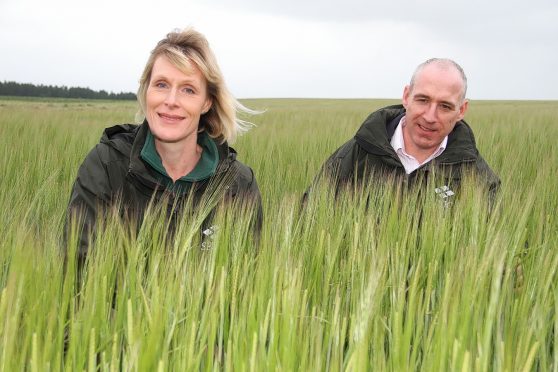Careful choice of cereal varieties can offer growers a real opportunity to save money, according to Professor Fiona Burnett of SRUC.
Using demonstration plots at Cereals in Practice, Saphock, Oldmeldrum, to make the point, she said: “Breeders have not been rewarded in the past for producing varieties with good disease resistance but that is changing rapidly.”
As an example Prof Burnett used a plot of the winter wheat variety Cordiale, which has a septoria triticale score of 4.8, showing quite poor resistance to the yield robbing fungus. The plot had been given a four spray programme, not untypical of that used in commercial practice at a cost of around £140 per hectare. The results were mediocre with the disease controlled but still obvious.
An adjacent plot had been sown with Siskin, also a bread making variety, but with a septoria resistance score of 6.8. This plot had not been sprayed at all but was completely free of disease.
Prof Burnett said: “The point we are making here is that there are real savings to be made. We selected these varieties to show how what seems a relatively small difference in septoria score – 4.8 against 6.8 on a scale of zero to nine can make a big difference.”
Dr Steve Hoad, also of SRUC, had welcoming words for Laureate, the new spring malting barley.
He said: “The yield advantage over current industry standard Concerto is 12% which is astonishing. It has overtaken three other new varieties in the malting approval process and there seems to be big tonnage of seed available for next year.”
